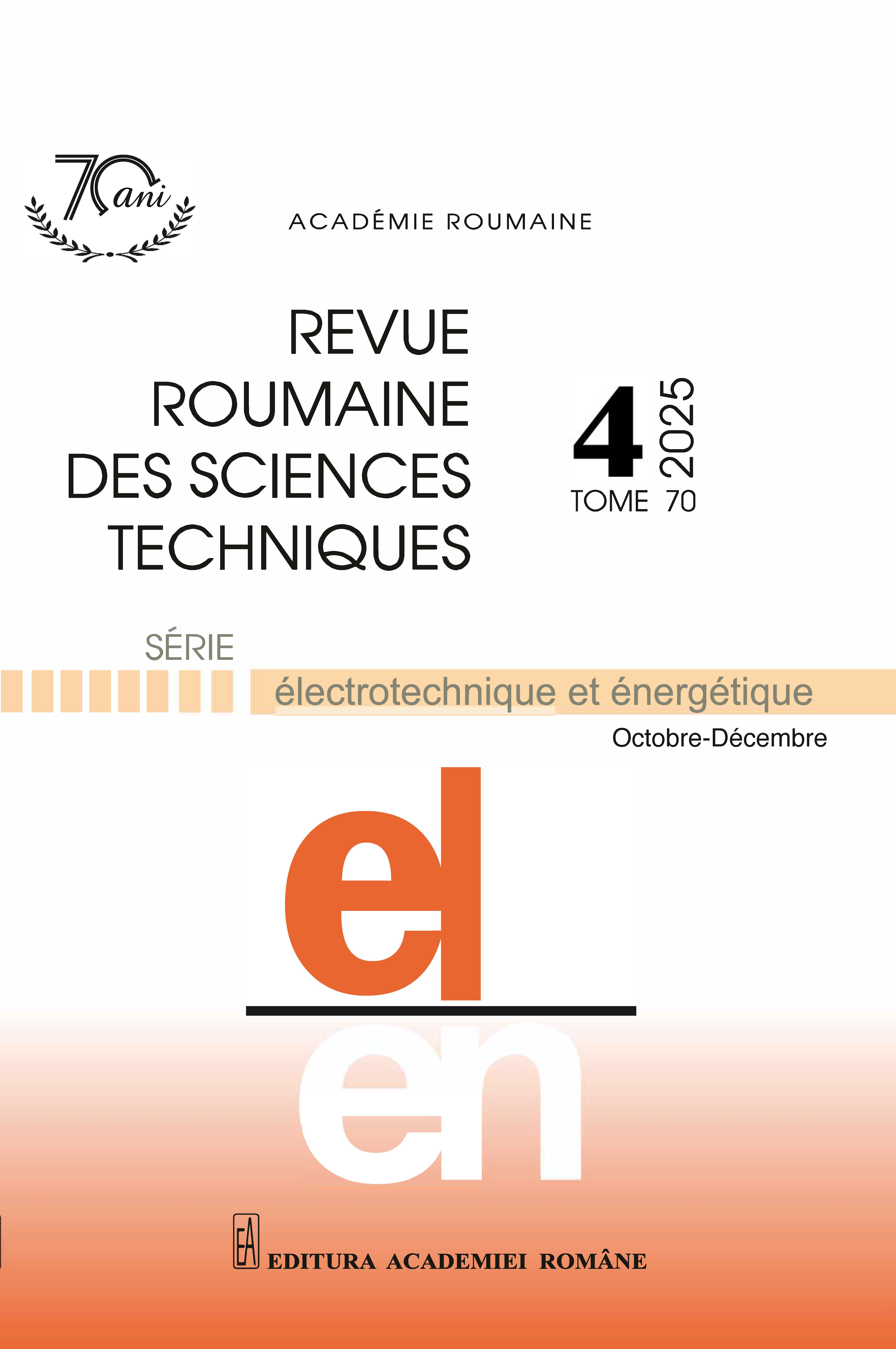WIRELESS AUTHENTICATION SYSTEM FOR INTERNET OF THINGS USING FREERADIUS AND BLOCKCHAIN
DOI:
https://doi.org/10.59277/RRST-EE.2025.4.26Keywords:
IoT, FreeRADIUS, Hyperledger, Private Blockchain, Authentication, Network SecurityAbstract
Wi-Fi networks are essential for wireless connectivity in homes, businesses, and public areas. However, many still rely on the outdated Wi-Fi Protected Access 2 (WPA2) protocol, which is well-known to have security weaknesses. These allow attackers to intercept and steal data or gain unauthorized access. While WPA3 offers better security through stronger encryption and authentication, it has not been widely adopted since many older devices do not support it. To address this challenge, we propose a decentralized authentication system that integrates a FreeRADIUS server with a locally hosted validation mechanism. We implemented a private blockchain using Hyperledger Fabric to enable distributed registration and verification of digital identities. As this system does not depend on a central authority, attackers cannot entirely compromise it by targeting single components. Our findings show that, although Hyperledger Fabric adds about 300 milliseconds to the authentication process, communication remains smooth thereafter, indicating that our approach is both practical and secure for device verification on such networks.
References
(1) R. Almutairi, G. Bergami, and G. Morgan, Advancements and Challenges in IoT Simulators: A Comprehensive Review, Sensors, 24, 5, pp. 1511 (2024).
(2) M. Almasre and A. Subahi, Create a Realistic IoT Dataset Using Conditional Generative Adversarial Network, Journal of Sensor and Actuator Networks, 13, 5, pp. 62 (2024).
(3) Z. Liu, L. Meng, Q. Zhao, F. Li, M. Song, Y. Jian, and H. Tian, Authenticated Key Agreement Scheme Based on Blockchain for AMI Communication Security, Rev. Roum. Sci. Techn. – Électrotechn. Et Énerg., 68, 2, pp. 218–223 (2023).
(4) Z.N.P.K. Lang, Blockchains in Public Administration: A RADIUS on Blockchain Framework for Public Administration, Thesis, Goethe-Universität Frankfurt am Main (2024).
(5) E.F. Hoffmann, C. Machado, and C.M. Westphall, RadChain Connect: Integration Between Blockchain and FreeRADIUS for Secure Authentication in Wi-Fi Networks/Web Environment, In Lecture Notes in Computer Science, 2025 International Conference on Information Networking (ICOIN), pp. 431–436 (2025).
(6) H. Hu, J. Yu, Z. Lin, H. Wu, and C. Yang, BlockLoader: A Comprehensive Evaluation Framework for Blockchain Performance Under Various Workload Patterns, Mathematics, 12, 21, pp. 3403 (2024).
(7) P. Oikonomou et al., Prototyping a Hyperledger Fabric-based Security Architecture for IoMT-based Health Monitoring Systems, Future Internet, 15, 9, pp. 308 (2023).
(8) A. Wilczyński and G. Jasnosz, Security Assessment of Smart Contract Integration and Wallet Interaction in Decentralized Applications: A Case Study of BlockScribe, Appl. Sci., 15, 15, pp. 8473 (2025).
(9) Y. Lai, J. Yang, M. Liu, Y. Li, and S. Li, Web3: Exploring Decentralized Technologies and Applications for the Future of Empowerment and Ownership, Blockchains, 1, 2, pp. 111–131 (2023).
(10) Z. Zhang, Y. Liu, Y. Zhang, and J. Zhang, A Secure and Efficient Authentication Scheme for Large-Scale IoT Networks, Electronics, 13, 18 (2024).
(11) ***ManageEngine: What is PKI? A Complete Guide to Public Key Infrastructure (2025).
(12) H. Li, X. Wang, and L. Zhang, Enhancing Security and Flexibility in the Industrial Internet of Things, Sensors, 24, 3, pp. 1035 (2025).
(13) C. Liu, HPCLS-BC: A Novel Blockchain Framework Using Heterogeneous Peer-Node and Cloud-Based Ledger Storage for Internet of Things Applications, Future Generation Computer Systems, 150, pp. 364–379 (2024).
(14) G.C. Serițan, B.A. Enache, I. Vilciu, S.D. Grigorescu, and V. Mladenov, Comparison study of top development boards in the context of IoT, Rev. Roum. Sci. Techn. – Électrotechn. et Énerg., 67, 4, pp. 483–486 (2022).
(15) R.A. Crăciun, R.N. Pietraru, and M.A. Moisescu, Internet of Things Platform Benchmark: An Artificial Intelligence Assessment, Rev. Roum. Sci. Techn. – Électrotechn. et Énerg., 69, 1, pp. 97–102 (2024).
(16) M. Gayathri Santhosh and T. Reshmi, Enhancing PKI Security in Hyperledger Fabric with an Indigenous Certificate Authority, In 2023 IEEE International Conference on Public Key Infrastructure and its Applications (PKIA), pp. 1–5 (2023).
(17) N. Paliwal, Setting up a WiFi Bridge Using Raspberry Pi 4 (2025).
(18) A. Rahman, M.J. Islam, S.S. Band, G. Muhammad, K. Hasan, and P. Tiwari, Towards a Blockchain-SDN-Based Secure Architecture for Cloud Computing in Smart Industrial IoT, Digital Communications and Networks, 9, 2, pp. 411–421 (2023).
(19) R. Alt and M. Gräser, Distributed Ledger Technology, Electronic Markets, 35, 1, pp. 53 (2025).
(20) J. Sychowiec and Z. Zieliński, A Collaborative Data Sharing Platform to Accelerate Translation of Biomedical Research, Biomedicines, 12, 9, pp. 938 (2024).
(21) M.S. Al Jasem, T. De Clark, and A.K. Shrestha, Toward Decentralized Intelligence: A Systematic Literature Review of Blockchain-Enabled AI Systems, Information, 16, 9, pp. 765 (2025).
(22) M. Jarosz, K. Wrona, and Z. Zieliński, Distributed Ledger-Based Authentication and Authorization of IoT Devices in Federated Environments, Electronics, 13, 19, pp. 3932 (2024).
(23) D. Penzes, Z. Vincze, and B. Varga, A Performance Analysis of Security Protocols for Distributed Measurement Systems Based on Internet of Things with Constrained Hardware and Open Source Infrastructures, Sensors, 24, 9, pp. 2781 (2024).
(24) R.V. Brăcăcescu, A proposal of digital identity management using blockchain, Rev. Roum. Sci. Techn. – Électrotechn. Et Énerg., 69, 1, pp. 85–90 (2024).
(25) C.A. Iordache and C.V. Marian, Project Management Expert System with Advanced Document Management for Public Institutions, Rev. Roum. Sci. Techn. – Électrotechn. Et Énerg., 69, 2, pp. 219–224 (2024).
Downloads
Published
Issue
Section
License
Copyright (c) 2025 REVUE ROUMAINE DES SCIENCES TECHNIQUES — SÉRIE ÉLECTROTECHNIQUE ET ÉNERGÉTIQUE

This work is licensed under a Creative Commons Attribution-NonCommercial-NoDerivatives 4.0 International License.


